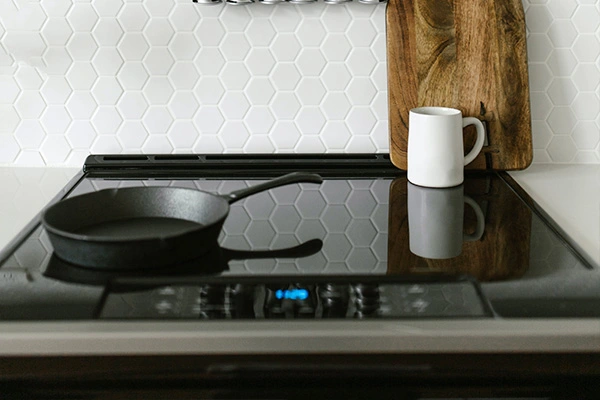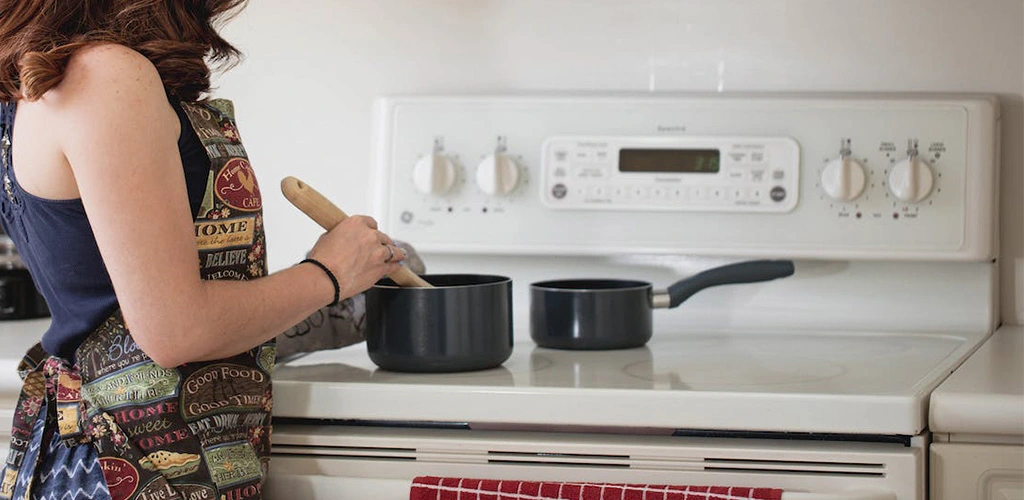What type of stove is used in the USA? Even Though it’s simple, the answer displays a fascinating combination of technology, society, and tradition. From modern electric stovetops to unique gas ranges, cooking appliances represent practicality, historical trends, and societal ideals.
This article will discuss the various kinds of stoves used in the US. Their effects on daily life and their popularity.
Table of Contents
What Type of Stove is Commonly Used in the USA?
The US stove scenario is as diverse as the country. There are various options for different cooking needs and favorites. Modern induction stoves are popular in cities for their energy saving specifications and temperature control.
However, many American kitchens still use gas burners for fast heat and a comfortable cooking experience. Wood-burning stoves draw out nostalgia and they offer a true cooking experience in rural areas.
The rebirth of outdoor cooking has promoted pellet grills and smokers. It helps in bringing excitement to the American stove scene. From gourmet chefs to backyard barbecuers, the US has a burner for every culinary fan.
Exploring Popular Stove Types: Answering ‘What type of stove is used in the USA
Gas stoves: Flaming Favorite
Cooks have loved gas stoves for decades. There is no sign of a decline in popularity. Professional chefs and home cooks in the US like these gas stoves. Gas stoves offer accurate heat control and rapid adjustments.
This makes the stoves more versatile than electric burners. It contributes to the pleasure and ambiance of cooking on a gas burner. Gas stoves provide an experiential element that other stoves lack.

The power outage reliability of the gas top is noteworthy. Gas burners can function as long as there’s natural gas or propane without electricity. Their demand is higher for households in power-disrupted areas due to their robustness.
Technology has also made new gas models more energy-efficient and cost-saving. Gas stoves will remain a core part of American kitchens for years to come due to their ongoing innovation and lasting features.
Pros and Cons of Gas Stove
Electric Stoves: Sparks of Modernity
Electric stoves are essential in modern kitchens. They demonstrate the advances in energy-efficient and eco-friendly appliances with their elegant design and innovativeness. Electric stoves are popular in the US due to their safety and convenience.
Professional chefs and household cooks prefer them for their effective temperature control and even heating capabilities. Electric stoves are attractive because they use clean energy. They don’t emit harmful gases like regular gas burners. Nowadays, consumers are becoming more environment friendly.

This leads them to look for sustainable options in all aspects of life. Electric stoves now combine with induction cooktops as technology emerges. This combination is improving energy efficiency and cooking quality.
Modern and innovative technology in cooking is reflected in electric stoves. They function well and reduce carbon footprints. It can result in improving the environment for future generations. Electric stoves are a bright point in our search for sustainable living as kitchen technology emerges rapidly.
Pros And Cons of Electric Stove
Induction Stoves: Heating Up the Culinary World
Induction stoves are redefining cooking with their precision and efficiency. It is gaining popularity worldwide. Induction stoves heat pots and pans directly using electromagnetic energy. Electromagnetic energy is giving these stoves more control and consistent heat as compared to gas or electric burners.
This technology speeds up cooking and eliminates open flames resulting in protection from burns. Due to their familiarity and fast heating, these stoves are very popular and are gaining reach in American kitchens. More homes are using this unique culinary appliance because of its stylish design, energy efficiency, and quick cooking capabilities.

Induction stoves use less energy and emit fewer pollutants than traditional burners. These are heating up American and international cuisine as more people discover the benefits of induction stoves.
Pros And Cons of Induction Stove
Dual-Fuel Stoves: Blending the Best of Both Worlds
Dual-fuel stoves are popular in the US. It combines efficacy and versatility. These stoves offer faster heating and better temperature control by combining gas and electric cooking. The gas burners provide precise control for simmering and sautéing, while the electric oven evenly bakes and roasts with steady heat.
This combination of technology makes dual-fuel stoves appropriate for many cooking styles. Their energy-saving design matches modern kitchens. Dual-fuel stoves let home cooks grill steaks on high-powered gas burners or bake pastries in an electric oven without sacrificing either.
Dual-fuel stoves will remain popular with enthusiastic cooks. These stoves suit those who are seeking the best performance in their kitchen appliances as technology.
Pros And Cons of Dual Fuel Stove
Wood-Burning Stoves: Kindling Nostalgia and Functionality
US citizens are once again using wood-burning stoves. The reason behind this is that they combine sentimentality with functionality. Even modern homeowners like them. These stoves provide effective heating and encourage a sense of warmth and comfort.
It attracts our desire for simplicity and nature. The crackling sound of burning wood and flickering flames are delightful breaks in a world of computerization.People are effectively using wood burning stoves as fuel technology progresses.

A few improved resources like wood pellets and coconut charcoal can be used to fuel wood-burning stoves. These stoves allow homes to use fuel from local woods or fallen trees. This helps in promoting self-reliance and resilience.
This hands-on approach helps us admire and protect natural resources. Hence, choosing a wood-burning stove is all about sustainability, warmth, and rekindling memories.
Pros And Cons of Wood Burning Stove
Conclusion: The Melting Pot of American Cooking Appliances
Finally, the different kinds of cooking appliances in American kitchens reflect the country’s unique cooking traditions and cultural influences. American families use various sorts of cooking equipment, from stovetops and ovens to air fryers and Instant Pots.
This mix of appliances used by cooks shows versatility and innovation as taste changes. It’s vital to encourage the diversity and inclusivity of American cooking as kitchen technology progresses. Let’s embrace diversity, try new appliances, and explore the endless gastronomic possibilities.
